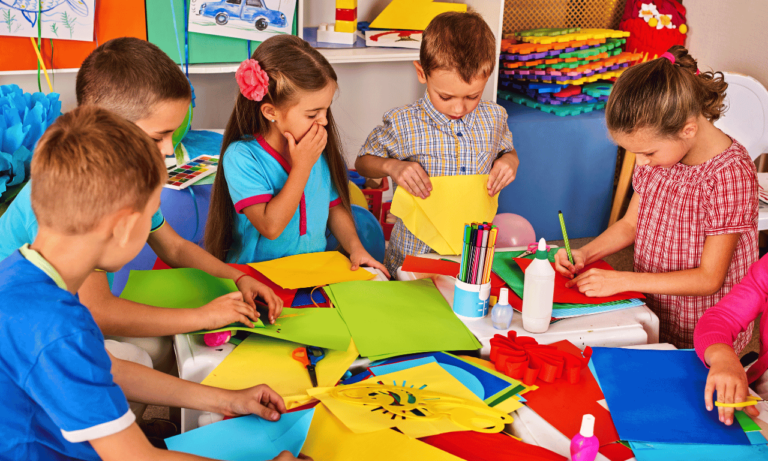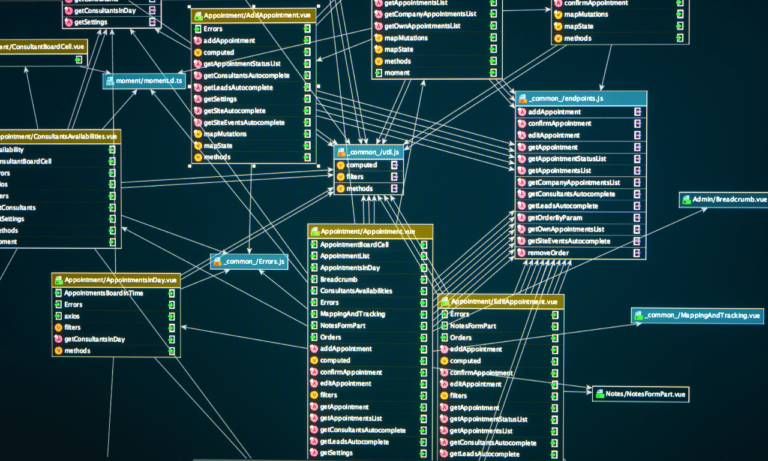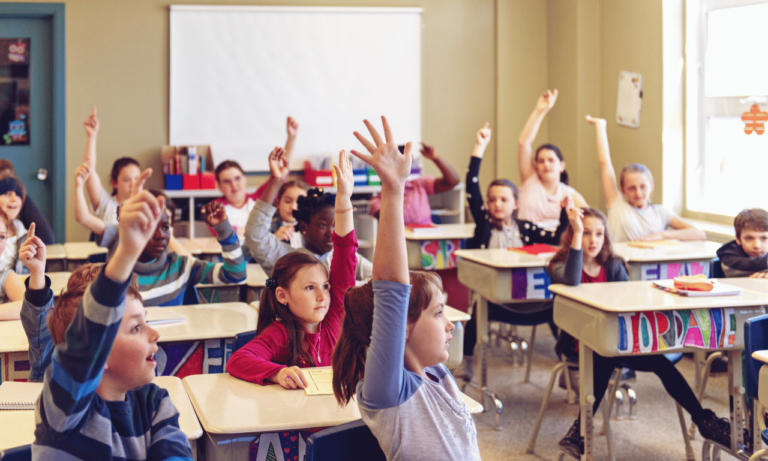Phone:
(+65)8319-0742
The education landscape is continually evolving, and at the forefront of this transformation are Facilitated Learning Approaches. These approaches sit at the confluence of educational facilitation, learner engagement tactics, and instructional design strategies, aiming to empower students and reshape the role of educators. By reframing the instructional designer as a guide rather than a gatekeeper, this pedagogical shift not only embraces student autonomy but also fosters a more dynamic and collaborative learning environment. Let’s delve into this modern paradigm and uncover how it’s changing the face of education.
Key Takeaways
- Facilitated Learning Approaches champion student-led discovery and problem-solving.
- Educational facilitation supports critical thinking by providing an environment of guidance rather than direct instruction.
- Learner engagement tactics are vital in creating participatory and interactive educational experiences.
- Instructional design strategies within facilitated learning focus on adaptability and relevancy to real-world applications.
- Encouraging autonomy, facilitated approaches build confidence and competence for future challenges.
Understanding Facilitated Learning Approaches
Revolutionizing education, facilitated learning approaches aim to pivot from the dated teacher-centric model to innovative, interactive teaching methods that put students in the driver’s seat of their educational journey. By integrating experiential education and emphasizing student-centered learning, this philosophy ensures that the learning process is not just about the transmission of knowledge, but about cultivating a deeper understanding through critical engagement and personal experience.
These modern teaching paradigms shift the focus to the individualâs needs and potential, tailoring the educational environment to enhance and reflect diverse learning styles. As students actively engage with and reflect on their learning, they build critical skills for future success. With educators facilitating rather than dictating the path of inquiry, students become architects of their own knowledge.
- Interactive teaching methods: Encouraging dynamic participation in the classroom.
- Experiential education: Applying concepts to real-world scenarios for a practical grasp of subject matter.
- Student-centered learning: Respecting individual learning paces and preferences.
| Traditional Education | Facilitated Learning |
|---|---|
| Teacher-led directives | Guided exploration and discovery |
| Focus on memorization | Emphasis on critical thinking |
| One-size-fits-all approach | Tailored learning experiences |
| Limited student engagement | Active and meaningful participation |
The Role of the Facilitator in Learning Environments
With the rise of student-centered learning, the facilitator’s role in the classroom has dramatically shifted from authority figure to guide. This transformative journey touches on several facets of educational development, incorporating an array of instructional design strategies to promote a holistic and engaging learning atmosphere.
From Traditional Instructor to Learning Guide
The paradigm shift from a traditional instructor-led approach to one that is facilitator-guided is marked by the adoption of collaborative learning techniques. Facilitators encourage learner engagement by moving away from didactic teaching methods, instead inspiring students to discover and build knowledge together. This change not only enhances learner interaction but also fosters a sense of community within the educational setting.
Creating Collaborative Learning Experiences
Under the guidance of an adept facilitator, the classroom becomes a hub for collaborative learning experiences. By designing and managing group-based activities, such as case studies and shared fieldwork, a facilitator successfully harnesses the collective intelligence of the group. Learners are motivated to explore concepts and solutions, significantly enriching their educational journey through peer insights and shared reflection.
Supporting Diverse Learning Styles and Needs
Inclusivity in learning environments is paramount, and a key part of instructional design strategies is ensuring that diverse learning styles and needs are adequately met. This requires facilitators to customize their engagement tactics, leveraging a rich tapestry of resources and learning modalities to cater to the unique preferences of each student. Such an approach not only uplifts the individual learner but also contributes to a well-rounded, supportive educational community.
Advantages and Challenges of Facilitated Learning

Facilitated Learning integrates various learner engagement tactics that pivot towards a more student-centered learning framework. By focusing on educational facilitation, this approach places students at the heart of their educational journey, promoting autonomy and interaction in ways traditional methods seldom achieve. Let’s delve into the reasons it enhances engagement and the obstacles educators may encounter.
Why Facilitated Learning Enhances Engagement
With an emphasis on collaborative learning techniques, Facilitated Learning encourages students to actively participate in their own educational process. This is achieved by allowing them to engage with peers, explore concepts through application, and reflect upon their learning experiences critically. Such engagement ensures that the acquisition of knowledge is a collective, dynamic, and deeply personalized process.
Addressing Common Obstacles in Implementation
Despite its clear benefits, there are several challenges to the widespread adoption of Facilitated Learning. The effective integration of this approach requires overcoming perceived barriers, such as cost implications, infrastructural demands, and the shift in educator roles from disseminator to guide. Acknowledging these obstacles is the first step towards creating practical solutions that uphold the integrity and intention of Facilitated Learning.
| Challenge | Impact | Potential Solution |
|---|---|---|
| Perceived Higher Costs | May limit the ability to provide necessary resources | Allocate funds based on long-term benefits and ROI |
| Pace of Instruction | Group dynamics dictate learning speed | Customize facilitation to match group progress |
| Ambiguous Teacher Roles | Confusion in teacher-student dynamics | Professional development in educational facilitation |
| Need for Group Facilities | Demands on space and infrastructure | Implement flexible, multi-use learning environments |
| Time-Intensive Nature | Less content coverage in more time | Focus on mastery over quantity of topics |
The successful implementation of Facilitated Learning mechanisms necessitates not just understanding but also a strategic approach to adapt and overcome these challenges. Doing so will enable education systems to harness the full potential of this innovative approach, resulting in an enriched, engaging, and empowering learning experience for students.
Key Strategies for Effective Educational Facilitation

Incorporating Facilitated Learning Approaches into educational settings necessitates strategic implementation to foster student-centered learning. At the core of these strategies is an emphasis on responsibility, diverse instructional methods, and contextual learning that resonates with the learnerâs experiences.
Encouraging Personal Responsibility in Learning
By endorsing personal responsibility, facilitators empower students to define their own learning trajectory. This empowerment is a principle of experiential education where learners are encouraged to actively engage with the material, setting goals that reflect their personal and academic aspirations. Choice, a key tenet in student-centered learning, becomes the channel through which students sculpt their educational journey uniquely.
Incorporating Varied Learning Materials and Techniques
Interactive teaching methods and instructional design strategies are at the forefront of maintaining a dynamic educational environment. Whether it is through digital simulations, role-plays, or the integration of multimedia tools, the objective is to cater to various learning styles and keep students actively involved in the learning process.
Fostering Connections Through Contextual Learning
The value of education amplifies when learners can relate their lessons to real-world scenarios. Collaborative learning techniques encourage students to draw parallels between course content and their real-life experiences or pressing societal issues, allowing knowledge to be applied practically and meaningfully.
| Facilitation Strategy | Key Benefit | Tools and Techniques |
|---|---|---|
| Personal Responsibility | Encourages autonomy and intrinsic motivation | Goal-setting workshops, self-assessment opportunities |
| Varied Learning Materials | Addresses diverse learning styles and preferences | Multimedia presentations, interactive modules |
| Contextual Learning | Strengthens real-world applicability of content | Case studies, current events discussions |
Facilitated Learning Approaches in Action

Facilitated Learning Approaches emphasize the synergy between educational facilitation and active participation, with learner engagement tactics playing a crucial role in fostering a dynamic classroom environment. The following examples illustrate how these methods are applied to promote a collaborative and enriching learning experience.
- Class Discussions: Facilitators initiate thought-provoking conversations that empower students to voice their ideas and learn from diverse perspectives.
- Multimedia Tools: Incorporating technology enriches the lesson plan, making content more accessible and engaging for the digital age learner.
- Peer-to-Peer Teaching: By promoting collaborative learning, students gain confidence and a deeper understanding of subject material through teaching one another.
The active application of Facilitated Learning Approaches nurtures essential skills for career advancement, such as creativity and critical thinking. Educational facilitation is not just about imparting knowledge but about creating a pathway for students to excel in a competitive workforce.
Conclusion
As we reflect on the transformative power of Facilitated Learning Approaches, it becomes clear that these strategies are not just an adjunct to traditional education models, but a dynamic and robust alternative that places student empowerment at its core. By harnessing interactive teaching methods, educators can foster a lively, student-centered learning environment that not only respects but thrives on the unique skills and perspectives of each learner.
This modern take on educationâsteeped in experiential learningâequips students with the capacity for critical thinking and collaboration, vital competencies in today’s interconnected world. The real-world applicability of the curriculum enhances the learning experience, instilling both confidence and competence that students carry forth into their future endeavors. Yet, the transition to a facilitated learning paradigm is not without its hurdles, requiring educators and institutions to thoughtfully navigate challenges to unlock its immense potential.
In conclusively marrying the best of student-centered learning and experiential education, facilitated approaches represent the next step in the evolution of educational methodologies. They offer an engaging, more reflective pathway to knowledge, one which respects the learner’s journey just as much as the destination. Indeed, the adoption of these approaches signifies a commitment to the development and success of learners in an era that values flexibility, creativity, and multifaceted intelligence.
FAQ
What are Facilitated Learning Approaches?
Facilitated Learning Approaches are instructional design strategies that prioritize student autonomy and place the learner at the center of the educational experience. Instead of a traditional lecture format, these approaches use educational facilitation to support students in pursuing their learning objectives, working on challenges, and contributing to each otherâs learning through interactive teaching methods and collaborative learning techniques.
How do Facilitated Learning Approaches differ from traditional education?
Unlike traditional education, which is often teacher-led and focuses on memorization, Facilitated Learning Approaches encourage critical thinking, comprehensive understanding, and a personalized education that respects individual learning styles. It involves learner engagement tactics and experiential education, allowing students to actively engage with materials and collaborate with peers in a more real-world context.
What is the role of a facilitator in learning environments?
In facilitated learning environments, the facilitator acts as a learning guide, rather than a traditional instructor, who fosters collaborative learning experiences and supports diverse learning styles and needs. The facilitatorâs responsibility includes promoting group dialogues, orchestrating brainstorming sessions, and creating activities that inspire exchange and interaction among learners to enhance engagement and understanding.
What are some advantages of Facilitated Learning?
Advantages of Facilitated Learning include increased learner engagement, the promotion of critical-thinking and problem-solving skills, and the encouragement of student autonomy. This approach also helps in creating experiences that are applicable in real-world situations, making education more relevant and impactful for the student.
What challenges might arise when implementing Facilitated Learning?
When implementing Facilitated Learning, educators may encounter challenges such as perceived higher costs, time-consuming processes due to the nature of group work, the need for additional facilities, and uncertainty about the instructorâs role. Additionally, the group dynamics can dictate the pace of instruction, which may be a barrier in certain educational settings.
How can facilitators encourage personal responsibility in students?
Facilitators can encourage personal responsibility by allowing students to set their own learning objectives and take part in choosing their assessment methods. This respect for individual preferences and styles helps students take ownership of their learning and become more invested in their educational journey.
What are some strategies facilitators use to maintain an engaging learning environment?
Facilitators often use a range of dynamic and interactive learning materials and techniques, including multimedia presentations, online resources, and role-plays. These strategies are designed to cater to modern learners, helping to maintain attention, foster understanding, and encourage active participation in the learning process.
How do facilitators foster connections through contextual learning?
Facilitators create connections by integrating learners’ personal experiences, current events, and real-life examples into the curriculum. This contextualization aids in illustrating the relevance of the educational material, prompting students to apply their knowledge in practical and meaningful ways.
In what ways do Facilitated Learning Approaches prepare students for career success?
Facilitated Learning Approaches prepare students for career success by developing skills that are in high demand in the workforce, such as creativity, problem-solving, collaboration, and critical thinking. By mirroring real-world dynamics in the learning process, students become adept at applying their knowledge and skills in professional settings.

















